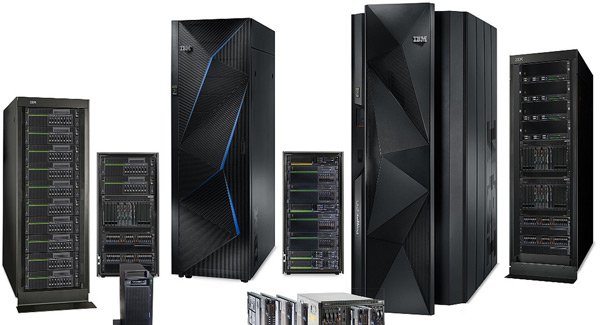
ITS blog: is there a way out of VMware?
text by František Kovařík

A new era
An era came to a definitive close this February, and I ask myself: Is there a way out of VMware? And if so, does it even make sense to follow it?
I've been using VMware Workstation since I was 15 and ESXi since I was 17. VMware and virtualization is synonymous for me.
But as they say, "Nothing lasts forever".
Since the announcement of VMware's acquisition by Broadcom in 2022, there have been numerous concerns and speculations from customers and partners. Some have even predicted the end of VMware, which was not surprising given Broadcom's reputation for acquisitions. The goals Broadcom has set for VMware are not modest.
Worst case scenario? Total product decline, reduced innovation and sales support focused only on the top 100 customers.
Fortunately, these fears have not yet come true. The situation around VMware by Broadcom seems to be stabilized.
And so now I ask myself: Isn't now the right time to think about whether there is even a way out of VMware (ESXi)?
Personally, I see three interesting alternatives on the market:
- Proxmox VE
- Nutanix AHV
- Microsoft Hyper-V
However, each of these platforms addresses different needs and types of customers. VMware's previous pricing offered over 12,000 SKUs, allowing it to build a solution that met the needs of small businesses to the enterprise.
Today, VMware by Broadcom limits us to 4 basic editions. While the new pricing is easier to understand, some use-cases no longer make sense and it's time to consider alternatives before the next renewal offer comes along.
What is Proxmox VE?
Proxmox VE is an open-source virtualization platform built on the Linux kernel. The virtualization technology is KVM-based and the entire platform is built as a Type 1 hypervisor, which means it can be installed directly on virtualization hardware, just like VMware ESXi (vSphere Server).
Because it is open-source, it is not tied to a single vendor and is free of charge, which provides considerable flexibility and eliminates licensing fees.
Proxmox offers interesting alternatives to most VMware components today, including virtual storage and virtual networking.
Although some of the Proxmox components may not be as fine-tuned as the VMware ones and a little extra work will be needed. Their affordability and flexibility makes them an interesting alternative.
Like VMware, Proxmox has an active community that provides a wealth of support and tutorials, making it easy to find solutions to problems or new uses.
Since it's Open-Source you can influence the development and direction at the same time.
In addition to community support, Proxmox also offers commercial support for those who require official guarantees and fast troubleshooting.
In addition, the platform supports native container operation using LXC, expanding the possibilities of deploying different applications alongside traditional virtual machines on the same platform.
One of the interesting things is definitely the first public release that took place back in 2008.
When does it make sense to choose Proxmox?
In my opinion, Proxmox is the best choice for smaller SMB environments where virtualization is needed on several servers and there is no ambition to integrate the infrastructure with cloud services from commercial providers (Google, AWS, Azure). With its affordability and flexibility, it offers a valuable alternative to the entire VMware virtualization stack.
For now, however, Proxmox is not an ideal choice for larger enterprise customers. I still find Proxmox lacks the appropriate alternatives to DRS (Distributed Resource Scheduler) or vSphere vMotion.
However, due to its continuous development and improvement, it may be an interesting option for larger companies in the future.
What is Nutanix AHV?
Nutanix AHV is a virtualization platform from Nutanix. It is an integrated hypervisor that is part of their HCI (hyperconverged infrastructure) solution.
Since it's built from the ground up as part of an HCI solution, it offers simple management, performance and is optimized to run applications in a cloud-centric environment.
As I said. Nutanix AHV is licensed as part of the HCI stack and cannot be purchased separately. However, their basic NCI (Nutanix Cloud Infrastructure) package already includes virtual networking, virtual storage and a Kubernetes option similar to VMware.
I see Nutanix's main strength in that it is designed to solve the problem of easy scalability and the need for extensibility.
Nutanix also supports integration with AWS, Google Cloud and Azure, bringing additional flexibility and optionality to hybrid cloud environments.
Conversely, one of the drawbacks today is that while Nutanix natively supports containers, the management is not as integrated compared to VMware Tanzu.
In theory Nutanix offers tools that should be able to migrate easily from VMware, unfortunately I was not able to test it in practice. Generally though, migrating VMs will not be a problem, but things will get complicated when migrating more complex configurations, networking, etc.
When does it make sense to choose Nutanix?
Nutanix is the most beneficial solution for mid-sized companies that are upgrading their infrastructure or building on greenfield sites and want to build an HCI solution and have a hybrid cloud option.
I see the disadvantage of switching to Nutanix in the narrower list of supported and certified hardware compared to VMware.
While Nutanix has the answer to the same needs as VMware VCF, the simplicity and management options for "enterprise" multi-cloud environments (networking, Kubernetes, unified management for hybrid solutions ...) are still not on par. Not to be taken for a ride, here it really depends what features and setup options one is comparing.
But what is not today can be tomorrow!
In conclusion, I would like to add that this solution seems to me to be the most similar to what VMware offers today.
What is Microsoft Hyper-V?
Hyper-V is, like the others, a Type 1 hypervisor. It differs from the competition in that it is tightly coupled with a Windows Server installation. It is therefore not as "lightweight" as VMware ESXi, but Windows Server offers many forms of installation, with or without a GUI...... ⚙️
Hyper-V has come a long way since its inception. The platform that was once created to keep Windows from falling behind in virtualization is now a thing of the past. Today, Microsoft offers us a mature solution that in many ways provides the same level of service we're used to seeing from VMware. After all, the Azure cloud runs on this technology!
The main advantage of Hyper-V for me has always been the licensing policy linked to Windows Server and the strong integration with the Microsoft ecosystem (System Center, Microsoft Defender and others).
This product is ideal for those who already have many Microsoft products. Hyper-V offers demonstrably better support for native Microsoft applications and the Windows operating system.
Although Hyper-V supports most major Linux distributions, it has more limited Linux support compared to VMware and other platforms, and this is something to watch out for.
Unfortunately, from my point of view it still doesn't offer all the enterprise features and simplicity for managing large environments, but maybe that's just a matter of habit.
Conclusion or what I would choose
Proxmox is often affordable and suitable for small and medium-sized businesses.
Hyper-V is well integrated with Microsoft environments and can be ideal for medium to large organizations that make extensive use of Microsoft technologies.
Nutanix is a strong choice for hyperconverged infrastructure, providing a robust solution for the need of a scalable environment.
In conclusion, I would like to add that a solution that would be as universal as VMware was originally will probably not be created. If I had my own Enterprise solution, I would consider combining multiple platforms for different Workloads.
So if you're really thinking about switching, I recommend thinking about what the new platform will bring you, and not just the licensing and support costs. As we've found, licensing can change from one day to the next, but the benefits and stability of the platform remain relatively constant and can be monitored over the long term.
PS: Is there a way out of VMware? - YES, just choose.
PPS: Since virtualization and VMware are still firmly linked for me, I'll hold out and hope that Broadcom will keep its promises and move VMware technically up a level again, and not just "farm" on existing clients.
About the author of the text
František Kovařík is in charge of foreign trade at ITS, specifically focusing on the Nordic countries. He brought his experience from companies such as IBM and TD Synnex, where he started as an IT specialist and later moved into the business consulting area. He is an enthusiast for new technologies and enjoys exploring them in detail. He focuses on finding real, practical solutions instead of marketing platitudes and tries to bring an often different angle to the issues at hand.
What else to read
See more news from the world of IT and ITS




